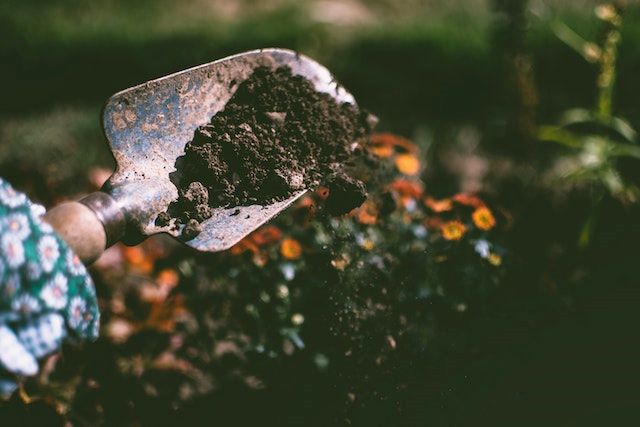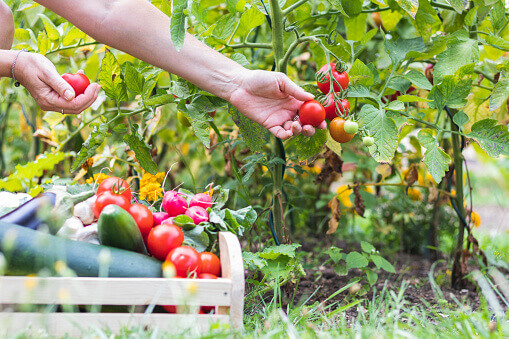Easy DIY Raised Garden Beds Guide
This post may include affiliate links where I might earn a commission, at no additional cost to you, should you go ahead and decide to buy anything off this post.
Many people find home gardening relaxing. But when things aren’t going your way, if your garden soil is awful, or you don’t want to spend your time bent over, know that you can grow bountiful harvests of food (and flowers) in a DIY raised garden bed.
Did you know that raised bed gardening can get you up to four times more produce compared to traditional gardening methods?
Imagine all of the fresh veggies and herbs that you can grow for your family!
Home gardening is relaxing. But when things aren’t going your way, if your garden soil is awful, or you don’t want to spend your time bent over, know that you can grow bountiful harvests of food (and flowers) in a DIY raised garden bed.
Did you know that raised bed gardening can get you up to four times more produce compared to traditional gardening methods?
Imagine all of the fresh veggies and herbs that you can grow for your family!
Benefits of Raised Garden Beds
Raised garden beds offer numerous benefits for gardeners. Here are some reasons why you should consider incorporating homemade garden boxes into your do-it-yourself garden projects:
- Improved drainage and erosion prevention: Raised garden beds provide better drainage, ensuring that excess water doesn’t flood your plants’ roots. This helps prevent soil erosion and promotes healthy plant growth.
- Extended growing season: The soil in raised beds warms up more quickly in the spring, allowing you to start planting earlier and extend your growing season. This means more time to enjoy fresh homegrown produce.
- Greater control over soil quality and nutrient content: With raised bed plans, you have the opportunity to create the perfect soil mix for your plants. You can amend the soil with organic matter, compost, and other nutrients to ensure optimal growth.
- Reduced weed growth and soil compaction: Raised beds are less prone to weed growth, as the elevated soil level creates a barrier. Additionally, the soil in raised beds isn’t compacted by foot traffic, making it easier to maintain and work with.
- Ideal for small spaces: If you have limited gardening space, raised beds are the perfect solution. They allow you to maximize your growing area by utilizing vertical space and creating multiple tiers.
- Enhanced gardening techniques: Raised beds facilitate square-foot gardening and companion planting, allowing you to efficiently organize your garden and optimize plant growth. These techniques help maximize yields and improve plant health.
- Comfortable gardening: Bending and kneeling for extended periods can strain your back and knees. However, raised beds eliminate the need for excessive bending, making gardening tasks, such as sowing seeds, weeding and more, all the more comfortable and enjoyable.
Expert Tip:
If you’re new to raised bed gardening, start with a small and portable garden bed to get a feel for it. This will allow you to experiment and learn as you go. Once you gain confidence, you can expand and customize your raised garden beds according to your needs and preferences.
The Benefits of Raised Garden Beds
| Raised Garden Beds | Traditional In-Ground Beds | |
|---|---|---|
| Improved drainage | ✓ | ✗ |
| Extended growing season | ✓ | ✗ |
| Control over soil quality and nutrients | ✓ | ✗ |
| Reduced weed growth | ✓ | ✗ |
| Ideal for small spaces | ✓ | ✗ |
| Comfortable gardening | ✓ | ✗ |
How to Build a Raised Garden Bed
Building a raised garden bed is quite an easy and rewarding DIY project that allows you to create a beautiful garden space tailored to your needs. Follow these simple steps to build a raised garden bed yourself.
1. Choose the materials: Select rot-resistant and chemical-free materials such as untreated wood, bricks, or concrete blocks for the construction of your raised garden bed. These materials ensure the longevity and safety of your garden bed.
2. Determine the size: Consider the available space in your garden and your gardening needs to determine the dimensions of your raised bed. Whether you have a small patio or a spacious backyard, you can customize the size to fit perfectly.
3. Prepare the site: Clear the area where you intend to place your raised garden bed. Ensure that the site receives adequate sunlight for the plants to thrive and that the ground is level for a stable foundation.
4. Assemble the sides: Cut the chosen materials to the desired length and attach them together using screws or nails. This forms the sides of your raised bed, creating a sturdy structure to hold the soil.
5. Install support in the center (for longer beds): If you have a longer raised bed, add a support board in the middle to prevent the sides from bowing over time. This is a simple additional reinforcement.
6. Attach corner brackets (optional): For added stability and aesthetic appeal, you have the option to reinforce the corners of your raised bed with metal corner brackets. These brackets provide extra support and ensure the longevity of your garden bed.
7. Add landscape fabric (optional): Thiis is especially good to prevent weeds from popping up through the bottom. Line the bed with landscape fabric before filling it with soil.
8. Place the bed and fill with soil: Position the raised garden bed in its desired location and fill it with nutrient-rich soil, adding in bone meal, organic compost, and even vermicompost.
9. Plant your garden: Once your raised garden bed is ready, it’s time to unleash your creativity and start planting. Choose your favorite vegetables, herbs, or flowers and enjoy the bountiful harvest and beauty of your very own raised garden.
By following these straightforward steps, you can easily build a raised garden bed that not only enriches your gardening experience but also enhances the aesthetics of your outdoor space. Build your dream garden today!
FAQ
Can I use any type of materials to build a raised garden bed?
Get your raised garden bed materials ready; it’s recommended to use rot-resistant and chemical-free materials such as untreated wood, bricks, or concrete blocks.
How do I determine the size of my raised garden bed?
The size of your raised bed should be based on the available space and your gardening needs.
What should I do to prepare the site for my raised garden bed?
Clear the area where you plan to install the raised bed, ensuring it receives adequate sunlight and has level ground.
Do I need to reinforce the corners of my raised garden bed?
You can use metal corner brackets to reinforce the corners for added stability and aesthetic appeal.
Should I line the bed with landscape fabric?
It isn’t essential but it is a good idea and I personally highly recommend it – the landscape fabric to prevent soil erosion and weed growth.
What type of soil should I use to fill my raised garden bed?
You should use a nutrient-rich soil mix that is suitable for the types of plants you will be growing.
Can I start planting immediately after building the raised garden bed?
Yes, once the raised bed is ready, you can start planting your favorite vegetables, herbs, or flowers.






